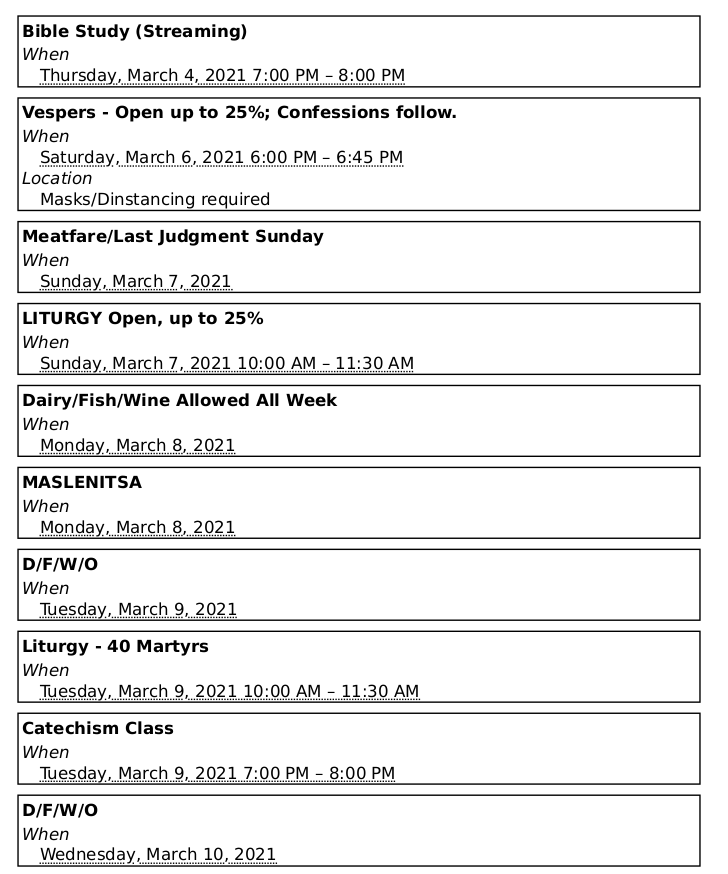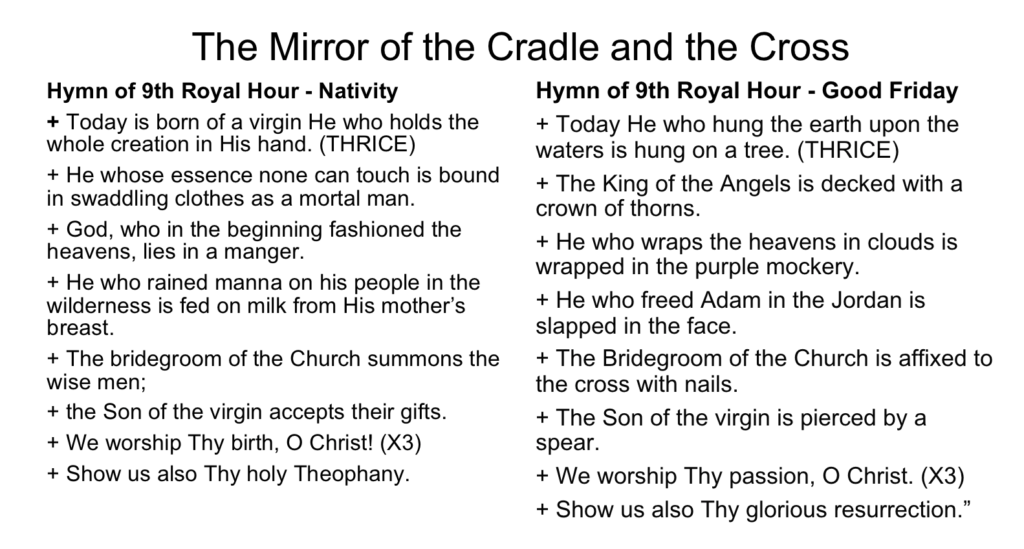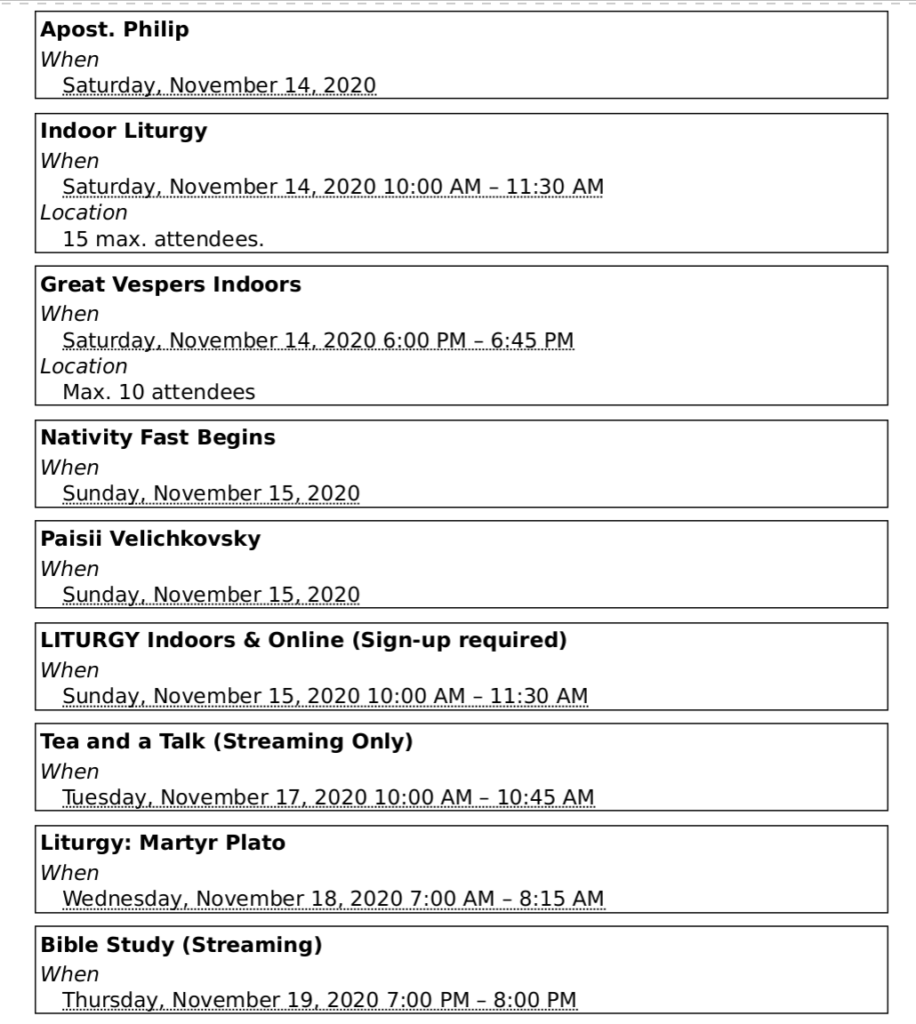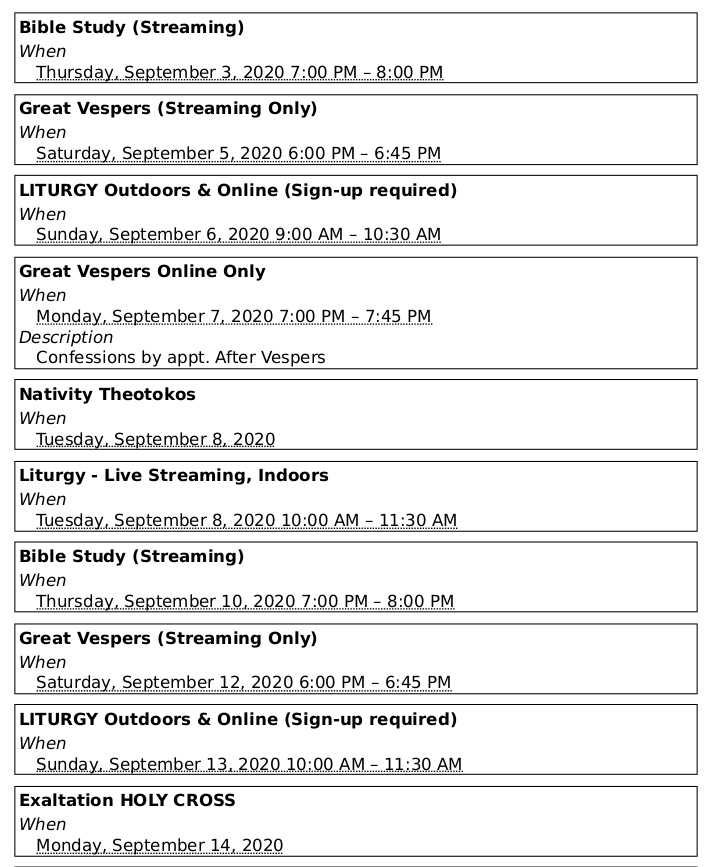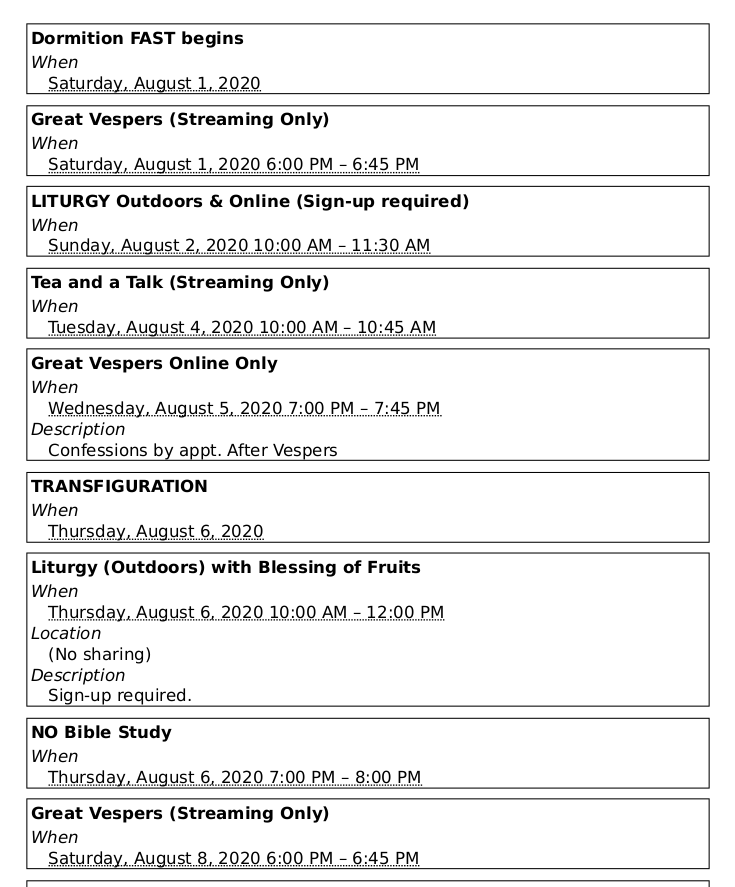
Focus on the Faith: Great Lent
by Fr Thomas Hopko
The season of Great Lent is the time of preparation for the feast of the Resurrection of Christ. It is the living symbol of man’s entire life which is to be fulfilled in his own resurrection from the dead with Christ. It is a time of renewed devotion: of prayer, fasting, and almsgiving. It is a time of repentance, a real renewal of our minds, hearts and deeds in conformity with Christ and his teachings. It is the time, most of all, of our return to the great commandments of loving God and our neighbors.
In the Orthodox Church, Great Lent is not a season of morbidity and gloominess. On the contrary, it is a time of joyfulness and purification. We are called to “anoint our faces” and to “cleanse our bodies as we cleanse our souls.” The very first hymns of the very first service of Great Lent set the proper tone of the season:
“Let us begin the Fast with joy . . . let us fast from the passions as we fast from food! Let us rejoice in the virtues of the Spirit and fulfill them in love, that we may be granted to see the holy Passion of Christ our God and his holy Pascha, rejoicing in spirit.”
“Thy grace has risen upon us, O Lord, the illumination of our souls has shown forth; behold, now is the acceptable time; behold, now is the time of repentance” (Vespers Hymns).
It is our repentance that God desires, not our remorse. We sorrow for our sins, but we do so in the joy of Great Lent
Fr Thomas Hopko
The season of Great Lent is the time of preparation for the feast of the Resurrection of Christ. It is the living symbol of man’s entire life which is to be fulfilled in his own resurrection from the dead with Christ. It is a time of renewed devotion: prayer, fasting, and almsgiving. It is a time of repentance, a real renewal of our minds, hearts, and deeds in conformity with Christ and his teachings. It is the time, most of all, of our return to the great commandments of loving God and our neighbors.
In the Orthodox Church, Great Lent is not a season of morbidity and gloominess. On the contrary, it is a time of joyfulness and purification. We are called to “anoint our faces” and to “cleanse our bodies as we cleanse our souls.” The very first hymns of the very first service of Great Lent set the proper tone of the season:
“Let us begin the Fast with joy . . . let us fast from the passions as we fast from food! Let us rejoice in the virtues of the Spirit and fulfill them in love, that we may be granted to see the holy Passion of Christ our God and his holy Pascha, rejoicing in spirit.”
“Thy grace has risen upon us, O Lord, the illumination of our souls has shown forth; behold, now is the acceptable time; behold, now is the time of repentance” (Vespers Hymns).
It is our repentance that God desires, not our remorse. We sorrow for our sins, but we do so in the joy of God’s mercy. We mortify our flesh, but we do so in the joy of our resurrection into life everlasting. We make ready for the resurrection during Great Lent, both Christ’s Resurrection and our own. God’s mercy. We mortify our flesh, but we do so in the joy of our resurrection into life everlasting. We make ready for the resurrection during Great Lent, both Christ’s Resurrection and our own.
From the Fathers
The Ancient Christian book, The Shepherd of Hermas, written around 100 AD, made these pronouncements regarding fasting. The principles still apply today in the Orthodox Church:
“Fasting … is very good, provided the commandments of the Lord be observed … First of all, be on your guard against every evil word, and every evil desire, and purify your heart from all the vanities of this world. If you guard against these things, your fasting will be perfect. And you will do also as follows. Having fulfilled what is written, in the day on which you fast you will taste nothing but bread and water; and having reckoned up the price of the dishes of that day which you intended to have eaten, you will give it to a widow, or an orphan, or to some person in want, and thus you will exhibit humility of mind, so that he who has received benefit from your humility may fill his own soul, and pray for you to the Lord. If you observe fasting, as I have commanded you, your sacrifice will be acceptable to God, and this fasting will be written down; and the service thus performed is noble, and sacred, and acceptable to the Lord.”
(Shepherd of Hermas, Book 3, Similitude 5, Chapter 3)
Orthopraxis: “Clean Week,” The First Week of the Fast
The first week of Great Lent starts on Clean Monday, the first day of Great Lent. The name “Clean Week” refers to the spiritual cleansing each of the faithful is encouraged to undergo through fasting, prayer, repentance, reception of the Holy Mysteries and begging forgiveness of his neighbor. It is also traditionally a time for spring cleaning so that one’s outward surroundings matches his inward disposition.
Throughout this week fasting is most strict. Those who have the strength are encouraged to fast completely, eating only on Wednesday and Friday evenings, after the Presanctified Liturgy. Those who are unable to keep such a strict fast are encouraged to eat only a little, and then only xerophagy* once a day. On Monday, no food should be eaten at all and only uncooked food on Tuesday and Thursday. Meals are served on Saturday and Sunday, but these are fasting meals at which meat, dairy products and fish are forbidden.
At Great Compline during the first four days of the Fast (Monday through Thursday) the Great Canon of St. Andrew of Crete is divided into four parts and one part is chanted each night (for further information about the Great Canon, see Fifth Week, below).
The First Saturday is called “St. Theodore Saturday” in honor of St. Theodore the Recruit, a 4th-century martyr. At the end of the Presanctified Liturgy on Friday (since, liturgically, the day begins at sunset) a special canon to St. Theodore, composed by St. John of Damascus, is chanted. Then the priest blesses kolyva (boiled wheat with honey and raisins) which is distributed to the faithful in commemoration of the following miracle worked by St. Theodore on the First Saturday of Great Lent.
Fifty years after the death of St Theodore, the emperor Julian the Apostate (361-363), as a part of his general policy of persecution of Christians, commanded the governor of Constantinople during the first week of Great Lent to sprinkle all the food provisions in the marketplaces with the blood offered to pagan idols, knowing that the people would be hungry after the strict fasting of the first week. St Theodore appeared in a dream to Archbishop Eudoxius, ordering him to inform all the Christians that no one should buy anything at the marketplaces, but rather to eat cooked wheat with honey (kolyva).
The First Sunday of Great Lent is the Feast of Orthodoxy, which commemorates the restoration of the veneration of icons after the Iconoclast controversy, which is considered to be the triumph of the Church over the last of the great heresies which troubled her (all later heresies being simply a rehashing of earlier ones). Before the Divine Liturgy on this day, a special service, known as the “Triumph of Orthodoxy” is held in cathedrals and major monasteries, at which the synodicon (containing anathemas against various heresies, and encomia of those who have held fast to the Christian faith) is proclaimed. The theme of the day is the victory of the True Faith over heresy. “This is the victory that overcomes the world, our faith” (1 John 5:4). Also, the icons of the saints bear witness that man, “created in the image and likeness of God” (Genesis 1:26), may become holy and godlike through the purification of himself as God’s living image.
The First Sunday of Great Lent originally commemorated the Prophets such as Moses, Aaron, and Samuel. The Liturgy’s Prokeimenon and alleluia verses as well as the Epistle (Hebrews 11:24-26,32-40) and Gospel (John 1:43–51) readings appointed for the day continue to reflect this older usage.
*”Xerophagy – Literally ‘dry eating,’ means partaking of unprocessed foods such as vegetables, fruits, grains and nuts or perhaps even dried bread and water.
Upcoming Events
Upcoming events this month (Events are subject to change! see the online calendar for updates or the attached PDF for more info)
